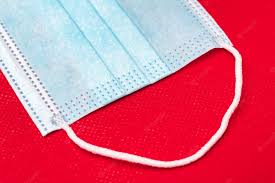What is nonwoven fabric for a mask?
Speaking about nonwoven fabric, such fabrics are porous as well as flexible products, and they come with one or more layers of fibre. Based on the manufacturing process, the separate fibres can be oriented in just one direction and sometimes, manufacturers wave them in a random manner. Non-woven fabrics can be bonded using a different processes, like mechanical processes and thermal and chemical processes.
Understanding the Raw Materials
If you check, you will find that polyester is the common fibre in the countries like the USA. In some cases, nylon and olefin are also used due to their amazing strength. On the other hand, rayon and cotton fibres are also used by manufacturers due to their absorbency. Moreover, some vinyon, acetate and acrylic materials are also used to create Nonwoven fabric.
In general, fibres are chosen based on the expected performance and their unique properties. Some manufacturers also combine various fibres of different lengths and generic groups.
Development
Nonwovens are generally engineered or created in such a way that they can provide certain properties suited to the end uses. For example, baby diapers can be made using two layers of nonwoven fabrics. The inner layer can be made of absorbent rayon, and the outer layer can be constructed using polyester. On the other hand, high-filtration nonwoven fabrics can be used to make surgical masks. More research is now conducted to explore different uses of nonwoven fabric.
Some Amazing Benefits of Using Non-woven Fabric?
The Fabric is Light Weight
The primary raw material used in the non-woven fabric is polypropylene, and the proportion is around 0.10, around three-fifth of the cotton material. On the other hand, the polypropylene fabric also feels good and supports more fleeciness. That’s why nonwovens are popular fabrics for creating face masks.
Non-irritating and non-toxic
Nonwovens are generally produced using food-grade raw materials following all the FDA guidelines. No other harmful chemicals or ingredients are used for this. That’s why nonwovens always demonstrate stable performance, and they are odorless, non-irritating and non-toxic to your skin. That means you can wear your facemask made of nonwoven fabric for hours without worrying about any skin issues.
Anti-Chemical and Antibacterial
As per different studies, polypropylene is a perfectly chemically blunt material, and the material is not insect-eaten. Besides, nonwovens can easily isolate the development of insects and bacteria. Due to its amazing antibacterial properties, it has become a popular material for creating face masks. Erosion can’t affect eh natural strength of the product.
Amazing Physical Properties
Created using polypropylene spinning directly into a durable net of thermal bonding material, different studies have proved that the strength of the material is much better than the normal fibre products. Nonwoven fibres demonstrate a similar amount of horizontal and vertical strength.
Environmentally Friendly
As per the experts, polypyrene is a type of raw material for nonwoven fabrics, and polyethene is a raw material that is widely used to make plastic bags. Even though these substances have the same names, their chemical structure is different. For instance, polyethene’s chemical molecular structure demonstrates robust stability, and it is very challenging to degrade. Studies have proved that it can take more than 350 years for plastic bags to decompose. On the other hand, polypropylene’s chemical structure is very weak, and its molecular can be broken easily. That means nonwoven fabric can be easily degraded and is environmentally friendly.
Why Is Nonwoven Fabri Used in Face Masks?
As per some studies, face masks created using quality nonwoven fabric are quite effective at preventing the spread of viruses or bacteria, including the COVID-19 virus. Fugaku, The fastest supercomputer in the world, can easily carry out more than 400 quadrillion computations within a second and perform some simulations on three different types of masks. During the test, it was discovered that non-woven masks are much better than face masks made of polyester and cotton.
Masks made of nonwoven fabric are generally disposable medical masks, and they are made using polypropylene. Due to its unique properties, the non-woven fabric can block nearly all types of droplets produced through a cough. On the other hand, polyester and cotton-made masks were less effective. However, they can still be able to block around 80 percent of droplets.


Comments
Post a Comment